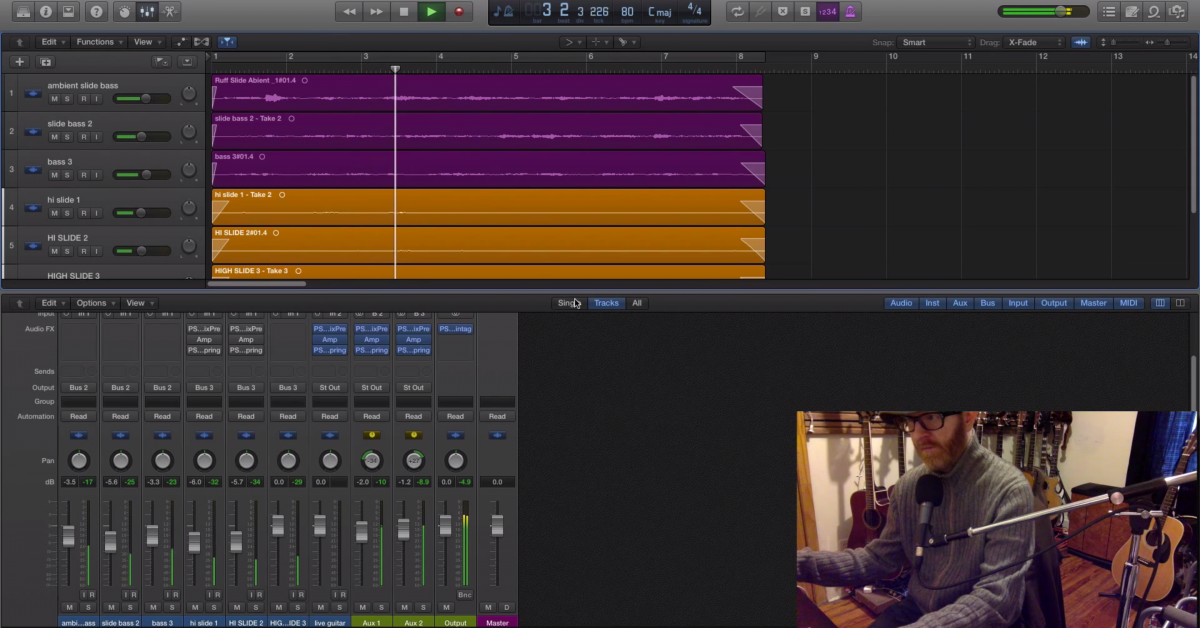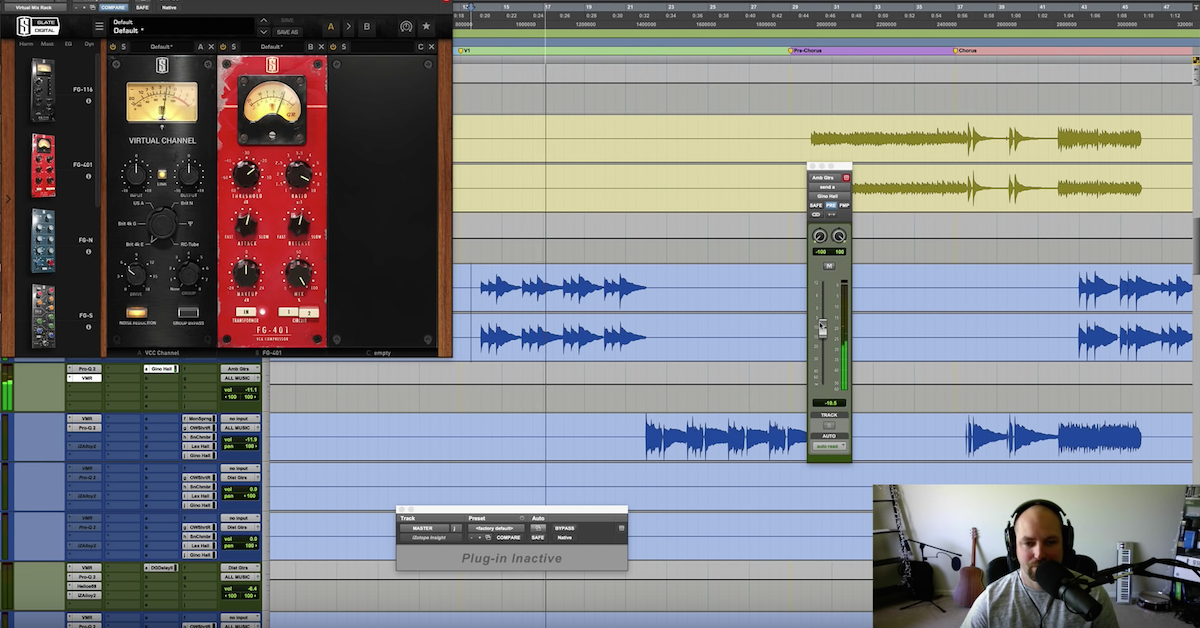9 Items That Can Save a Guitar Recording Session
Article Content
1. Allen Wrenches
A guitarist might show up and find they’re getting a lot of string buzzing. The problem? Their action is too low and it’s really showing in lack of sustain and buzz.
This can be easily adjusted with the proper tools. A lot of guitars use Allen wrenches for action adjustment. Not all guitars use the same size, however. This means you’ll have to buy a nice set of Allen wrenches.
2. Power Supply
A guitarist may show up with a noisy power supply.
Having something like a Voodoo Labs Pedal Power handy could save the day and keep hum from eating up your track.
3. Socket Wrench
A lot of guitars use an Allen wrench for neck adjustments. However, some guitars like Gibson are only adjustable with a socket wrench.
I don’t recommend making these kinds of adjustments without experience, but if you know what you’re doing, a quick neck adjustment could do wonders for the sound of the instrument.
Also, input jacks on Strats can only be tightened by a socket wrench with a screwdriver handle. When a jack gets loose on a Strat, it can crackle. This is especially troublesome if the band is doing live tracking.
4. Extra Strings
It’s not your job to supply strings. But if a string breaks and the guitarist doesn’t have backups, somebody needs to be the hero.
Tip: It’s a good idea to send out an email before the session with a checklist about what musicians should bring to a session. This is incredibly handy for less experienced musicians.
Having an extra set of strings around for acoustic and electric guitars won’t break the bank and can keep things moving in a worst-case scenario.
5. House Tuner
It’s likely a band will either show up with different tuners or no tuner at all.
Having everyone tune to the same tuner will ensure more consistent intonation between instruments.
By the same tuner, I mean the same physical tuner. Just because they’re the same model doesn’t mean they’re exactly the same.
Use one tuner and pass it around. Include the bass player on this when he gets back from pounding his PBR tallboy.
6. Extra Instrument Cables
I’ve set up for a session a few times to find out my perfectly good cable is not behaving.
It’s an odd occurrence because when I left the session and played a gig it was fine. Having a few cables to swap out at different lengths is always fail-proof.
Tip: Label your cables so they don’t walk away. It could have your name on it or color coded. Nobody means to take them [wink wink].
Try different cables too. They don’t all sound the same. The studio is an audio microscope. You notice all finite changes.
7. Old Credit Card
A lot of guitarists show up to a session with a large pedalboard. See my article about pedalboards.
Playing through too many pedals can be a tone suck sometimes. You might have to take the pedal off the board so you can make the signal path shorter.
If the pedals are attached with good Velcro, it’s going to give a fight coming off, but sliding an old credit card underneath the pedal as you pull it up will release the pedal easily.
Tip: Only use old outdated credit cards or you might be paying for the guitarist’s dream PRS Custom Reserve Stock guitar they’ve been drooling over.
8. Screwdrivers
Some pedals require you to remove screws to replace the battery. Yeah, I’m surprised too. It is the year 2014, right? Plus, if you need to take the truss rod cover off a Gibson for an adjustment, you need a small screwdriver.
This means you shouldn’t just have one screwdriver, but a set that has different sizes. Make sure you have both Phillips and Flathead tips.
It’s also worth noting that the intonation on most guitars is adjustable with a small screwdriver.
9. Chapstick
In the event a string breaks and you have to replace it, you’ll notice that the new string sounds out of place. You may not have time to change all the strings and properly stretch them during the session. So what do you do?
Solution: Wipe some non-scented Chapstick on the new string and play for a few minutes. The Chapstick will deaden the string a little bit to match the others.
Still, make sure to stretch the new string so it doesn’t come out of tune while you’re playing.
Conclusion
These tips may seem pretty obvious, but I can’t tell you how many times I’ve been in a session where at least one of these items was needed.
Guitarists rarely travel with a toolbox. If the guitarist on the session is not super studio savvy, they may not even know how their gear is going to react when the “microscope” is on.
Remember, it’s easier to fix problems as they’re happening. it’s never easier to fix while editing or in the mix.





